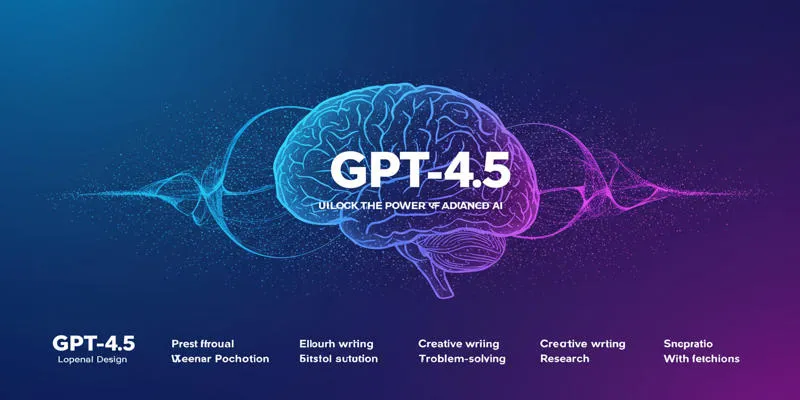Sentiment analysis is the textual identification of emotions, helping to determine if a message is neutral, negative, or positive. Many organizations use sentiment analysis to enhance marketing strategies, improve customer service, and gather product feedback. TensorFlow Extended (TFX) is a powerful tool for creating machine learning pipelines, streamlining the handling of large-scale ML projects, preprocessing data, model training, and deploying results.
Managing production-ready systems in challenging environments is best accomplished with TFX. Developed by Google, TFX provides an end-to-end scalable solution for machine learning tasks. This article will guide you through building a sentiment analysis pipeline using TFX. The procedures outlined are straightforward and suitable for individuals at any level of experience.
What Is TensorFlow Extended (TFX)?
Built on TensorFlow, TFX is a comprehensive machine learning tool that simplifies the entire machine learning lifecycle. It encompasses data validation, transformation, model training, evaluation, and deployment. TFX ensures the consistency and reliability of your ML pipeline from start to finish, allowing teams to create scalable, repeatable processes for practical applications. TFX helps detect data issues early on and improve model accuracy, promoting automation to speed up and enhance the process. Whether in production or research settings, TFX is an ideal choice for streamlining your ML workflow, regardless of your experience level. Start simplifying your machine learning tasks with TFX today.
TFX includes key components such as:
- ExampleGen: For data input.
- StatisticsGen: For data statistics.
- SchemaGen: To generate a schema.
- ExampleValidator: To check data quality.
- Transform: For feature engineering.
- Trainer: To train models.
- Evaluator: To assess model performance.
- Pusher: For model deployment.
Sentiment Analysis with TFX
Discover how TFX can assist you in quickly creating and implementing sentiment analysis models.
Step 1: Preparing the Dataset
To start sentiment analysis, you need a dataset. One excellent option is the IMDb movie review collection, containing positive and negative reviews labeled with 1s and 0s. Utilize TensorFlow datasets to download it, create training and evaluation sets, and convert the data into TFRecord format for TFX. Save the data in a directory accessible to TFX components for future use.
Step 2: Setting Up the TFX Pipeline
Design the pipeline for your sentiment analysis project using Python definitions as TFX pipelines. Write a script to execute and build the pipeline.
Import necessary libraries: python import tfx from tfx.components import CsvExampleGen, Trainer, Transform, Pusher from tfx.orchestration.local.local_dag_runner import LocalDagRunner
Step 3: Data Preprocessing with the Transform Component
Text data requires tokenization and cleaning, managed by the Transform component. Create an initialization function in a separate file (e.g., preprocessing.py) to handle text processing.
Example:
python
def preprocessing_fn(inputs):
import tensorflow_transform as tft
review = inputs[‘review’]
review = tf.strings.lower(review)
review = tf.strings.regex_replace(review, r"
", " “)
review = tf.strings.regex_replace(review, r”[^a-z ]", “”)
return {
‘review_tokens’: tft.compute_and_apply_vocabulary(review)
}
Step 4: Building the Sentiment Model
The Trainer component trains your sentiment analysis model. Define an algorithm in another file (e.g., model.py) using TensorFlow and Keras.
Example model: python def build_keras_model(vocab_size): model = tf.keras.Sequential([ tf.keras.layers.Embedding(vocab_size, 64), tf.keras.layers.GlobalAveragePooling1D(), tf.keras.layers.Dense(64, activation=‘relu’), tf.keras.layers.Dense(1, activation=‘sigmoid’) ]) model.compile(optimizer=‘adam’, loss=‘binary_crossentropy’, metrics=[‘accuracy’]) return model
Step 5: Evaluating the Sentiment Model
Assess your model to ensure its performance by specifying metrics such as accuracy and AUC. The evaluation component determines if the model is ready for production, comparing it with a baseline model if available. TFX automatically tracks and logs evaluation metrics, facilitating model monitoring and improvement.
Step 6: Deploying the Model
After passing evaluation, the Pusher component aids in deploying the model to a serving directory for TensorFlow Serving. Test the model locally before global deployment, ensuring it is in TensorFlow Serving-compliant SavedModel format. Thorough testing and deployment guarantee the model’s readiness for production, providing scalable and reliable performance for your sentiment analysis tasks.
Benefits of Using TFX for Sentiment Analysis
Automation, scalability, consistency, and monitoring simplify the machine learning process significantly.
- Automation: TFX automates the entire machine learning cycle, reducing human errors and manual work from data preparation to model deployment, ensuring a consistent workflow and saving time and resources.
- Scalability: TFX efficiently handles large datasets and scales naturally, suitable for enterprise-level projects and demanding large-scale ML tasks without compromising performance.
- Consistency: TFX aligns serving logic and training, preventing variations in model performance during deployment, ensuring the model functions as intended in real-world scenarios.
- Monitoring: TFX provides robust monitoring tools to track model performance over time, identifying data drift or model degradation early to maintain model reliability.
Conclusion
TensorFlow Extended (TFX) simplifies machine learning for sentiment analysis by automating crucial tasks such as data processing, model training, evaluation, and deployment. It offers scalability and consistency, excelling in managing complex production environments and large datasets. TFX tracks model performance through built-in monitoring tools, enabling timely adjustments and enhancements. By streamlining the construction, training, and deployment of sentiment analysis models, TFX ensures high-quality results and efficient performance in real-world applications, regardless of your level of developer experience. TFX accelerates and ensures greater reliability in deploying machine learning technologies.
 zfn9
zfn9












